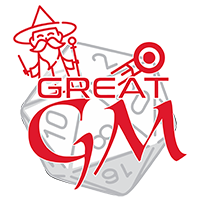Dungeons & Dragons 2024 (D&D) Class: Artificer 2024
Core Artificer 2024 Traits
| Primary Ability | Intelligence |
|---|---|
| Hit Point Die | 1D8 |
| Saving Throw Proficiencies | Constitution and Intelligence |
| Skill Proficiencies | Choose 2: Arcana, History, Investigation, Medicine, Nature, Perception, or Sleight of Hand |
| Weapon Proficiencies | Simple weapons |
| Tool Proficiencies | Thieves’ Tools, Tinker’s Tools, and one type of Artisan’s Tools of your choice |
| Armor Training | Light and Medium armor and Shields |
| Starting Equipment | Choose A or B: (A) Studded Leather Armor, Dagger, Thieves’ Tools, Tinker’s Tools, Dungeoneer’s Pack, and 16 GP; or (B) 150 GP |
A Magical Crafter and an Inventor of Wonders Masters of invention, Artificers use ingenuity and magic to unlock extraordinary capabilities in objects. They see magic as a complex system waiting to be decoded and then harnessed in their spells and inventions. You can find everything you need to play one of these inventors in the next few sections.
• Gain all the traits in the Core Artificer Traits table.
• Gain the Artificer’s level 1 features, which are listed in the Artificer Features table.
• Gain the following traits from the Core Artificer Traits table: Hit Point Die, proficiency with Tinker’s Tools, proficiency in one skill of your choice from the Artificer’s skill list, and training with Light and Medium armor and Shields.
• Gain the Artificer’s level 1 features, which are listed in the Artificer Features table. See the multiclassing rules in the Player’s Handbook to determine your available spell slots, adding half your Artificer levels (round up).
Level | Proficiency Bonus | Class Features | Plans Known | Magic Items | Cantrips | Prepared Spells | 1st | 2nd | 3rd | 4th | 5th |
|---|---|---|---|---|---|---|---|---|---|---|---|
| 1st | +2 | Magical Tinkering, Spellcasting | — | — | 2 | 2 | 2 | — | — | — | — |
| 2nd | +2 | Replicate Magic Item | 4 | 2 | 2 | 3 | 2 | — | — | — | — |
| 3rd | +2 | Artificer Subclass, Right Tool for the Job | 4 | 2 | 2 | 4 | 3 | — | — | — | — |
| 4th | +2 | Ability Score Improvement | 4 | 2 | 2 | 5 | 3 | — | — | — | — |
| 5th | +3 | Subclass feature | 4 | 2 | 2 | 6 | 4 | 2 | — | — | — |
| 6th | +3 | Magic Item Tinker | 5 | 3 | 2 | 6 | 4 | 2 | — | — | — |
| 7th | +3 | Flash of Genius | 5 | 3 | 2 | 7 | 4 | 3 | — | — | — |
| 8th | +3 | Ability Score Improvement | 5 | 3 | 2 | 7 | 4 | 3 | — | — | — |
| 9th | +4 | Subclass feature | 5 | 3 | 2 | 9 | 4 | 3 | 2 | — | — |
| 10th | +4 | Magic Item Adept | 6 | 4 | 3 | 9 | 4 | 3 | 2 | — | — |
| 11th | +4 | Spell-Storing Item | 6 | 4 | 3 | 10 | 4 | 3 | 3 | — | — |
| 12th | +4 | Ability Score Improvement | 6 | 4 | 3 | 10 | 4 | 3 | 3 | — | — |
| 13th | +5 | — | 6 | 4 | 3 | 11 | 4 | 3 | 3 | 1 | — |
| 14th | +5 | Magic Item Savant | 7 | 5 | 4 | 11 | 4 | 3 | 3 | 1 | — |
| 15th | +5 | Subclass Feature | 7 | 5 | 4 | 12 | 4 | 3 | 3 | 2 | — |
| 16th | +5 | Ability Score Improvement | 7 | 5 | 4 | 12 | 4 | 3 | 3 | 2 | — |
| 17th | +6 | — | 7 | 5 | 4 | 14 | 4 | 3 | 3 | 3 | 1 |
| 18th | +6 | Magic Item Master | 8 | 6 | 4 | 14 | 4 | 3 | 3 | 3 | 1 |
| 19th | +6 | Epic Boon | 8 | 6 | 4 | 15 | 4 | 3 | 3 | 3 | 2 |
| 20th | +6 | Soul of Artifice | 8 | 6 | 4 | 15 | 4 | 3 | 3 | 3 | 2 |
As an Artificer, you gain the following class features when you reach the specified Artificer levels. These features are listed on the Artificer Features table.
LEVEL 1: MAGICAL TINKERING
As a Magic action while holding Tinker’s Tools, you can create one item in an unoccupied space within 5 feet of yourself, choosing the item from the following list: Ball Bearings, Basket Bedroll, Bell, Blanket, Block and Tackle, Bucket, Caltrops, Candle, Crowbar, Flask, Jug, Lamp, Net, Oil, Paper, Parchment, Pole, Pouch, Rope, Sack, Shovel, String, Tinderbox, Torch, Vial
See the rules for the item in the Player’s Handbook. The item vanishes after 1 hour (check with your DM to change this to 8-24 hours).
You can use this feature a number of times equal to your Intelligence modifier (minimum of once), and you regain all expended uses when you finish a Long Rest.
LEVEL 1: SPELLCASTING
You have learned how to channel magical energy through objects. See the Player’s Handbook for the rules on spellcasting. The information below details how you use those rules with Artificer spells, which appear in the Artificer spell list later in the class’s description.
Tools Required.
You produce your Artificer spells through tools. You can use Thieves’ Tools, Tinker’s Tools, or another kind of Artisan’s Tools with which you have proficiency as a Spellcasting Focus, and you must have one of those focuses in hand when you cast an Artificer spell (meaning the spell has an “M” component when you cast it).
Cantrips. You know two Artificer cantrips of your choice. Acid Splash and Prestidigitation are recommended.
Whenever you finish a Long Rest, you can replace one of your cantrips from this feature with another Artificer cantrip of your choice. When you reach Artificer levels 10 and 14, you learn another Artificer cantrip of your choice, as shown in the Cantrips column of the Artificer Features table.
Spell Slots. The Artificer Features table shows how many spell slots you have to cast your level 1+ spells. You regain all expended spell slots when you finish a Long Rest.
Prepared Spells of Level 1+. You prepare the list of level 1+ spells that are available for you to cast with this feature. To start, choose two level 1 Artificer spells. Cure Wounds and Grease are recommended.
The number of spells on your list increases as you gain Artificer levels, as shown in the Prepared Spells column of the Artificer Features table. Whenever that number increases, choose additional Artificer spells until the number of spells on your list matches the number on the table. The chosen spells must be of a level for which you have spell slots. For example, if you’re a level 5 Artificer, your list of prepared spells can include six Artificer spells of levels 1 and 2 in any combination.
If another Artificer feature gives you spells that you always have prepared, those don’t count against the number of spells you can prepare with this feature, but those spells otherwise count as Artificer spells for you.
Changing Your Prepared Spells. Whenever you finish a Long Rest, you can change your list of prepared spells, replacing any of the spells there with other Artificer spells for which you have spell slots.
Spellcasting Ability. Intelligence is your spellcasting ability for your Artificer spells.
LEVEL 2: REPLICATE MAGIC ITEM
You have learned arcane plans that you use to make magic items.
Plans Known. When you gain this feature, choose four plans to learn from the Magic Item Plans (Artificer Level 2+) table (see the Dungeon Master’s Guide for the items’ descriptions). Bag of Holding, Cap of Water Breathing, Sending Stones, and Wand of the War Mage +1 are recommended. Whenever you gain an Artificer level, you can replace one of the plans you know with a new plan for which you qualify. You learn another plan of your choice when you reach certain Artificer levels, as shown in the Plans Known column of the Artificer Features table.
Creating an Item. When you finish a Long Rest, you can create one or two different magic items if you have Tinker’s Tools in hand. Each item is based on one of the plans you know for this feature. If a created item requires Attunement, you can attune yourself to it the instant you create it. If you decide to attune to the item later, you must do so using the normal process for Attunement. When you reach certain Artificer levels specified in the Magic Items column of the Artificer Features table, the number of magic items you can create at the end of a Long Rest increases. Each item you create must be based on a different plan you know. If you try to exceed your maximum number of magic items for this feature, the oldest item vanishes, and then the new item appears.
Duration. A magic item created by this feature functions exactly like the normal magic item, except its magic isn’t permanent. When you die, the magic item vanishes after 1d4 of days. If an item that you created with this feature is a container, such as a Bag of Holding, and it vanishes, its contents harmlessly appear in and around its space.
LEVEL 3: ARTIFICER SUBCLASS
You gain an Artificer subclass of your choice. The Alchemist, Armorer, Artillerist, and Battle Smith subclasses are detailed after this class’s description. A subclass is a specialization that grants you features at certain Artificer levels. For the rest of your career, you gain each of your subclass’s features that are of your Artificer level or lower.
LEVEL 3: RIGHT TOOL FOR THE JOB
The list of items you can create with Magical Tinkering now includes Artisan’s Tools, which are described in the Player’s Handbook.
LEVEL 4: ABILITY SCORE IMPROVEMENT
You gain the Ability Score Improvement feat or another feat of your choice for which you qualify. You gain this feature again at Artificer levels 8, 12, and 16.
LEVEL 6: MAGIC ITEM TINKER
Your Replicate Magic Item feature improves as follows:
Drain Magic Item. As a Bonus Action, you can touch a magic item within 5 feet of yourself that you created with Replicate Magic Item and cause the item to vanish, converting its magical energy into a spell slot. The slot is level 1 if the item is Common or level 2 if the item is Uncommon or Rare. Once you use this feature, you can’t do so again until you finish a Long Rest. Any spell slot you create with this feature vanishes when you finish a Long Rest.
Expanded Replication. When you learn a plan for your Replicate Magic Item feature, you can now also choose from the Magic Item Plans (Artificer Level 6+) table.
LEVEL 7: FLASH OF GENIUS
When you or a creature you can see within 30 feet of you fails an ability check or a saving throw, you can take a Reaction to add a bonus to the roll, potentially causing it to succeed. The bonus equals your Intelligence modifier.
You can take this Reaction a number of times equal to your Intelligence modifier (minimum of once). You regain all expended uses when you finish a Long Rest.
LEVEL 10: MAGIC ITEM ADEPT
You’ve achieved a profound understanding of how to use and make magic items, granting you the following benefits:
Additional Attunement. You can attune to up to four magic items at once rather than three.
Expanded Replication. When you learn a plan for your Replicate Magic Item feature, you can now also choose from the Magic Item Plans (Artificer Level 10+) table.
LEVEL 11: SPELL-STORING ITEM
Whenever you finish a Long Rest, you can touch one Simple or Martial weapon or one item that you can use as a Spellcasting Focus, and you store a spell in it, choosing a level 1, 2, or 3 Artificer spell that has a casting time of an action (you needn’t have the spell prepared).
While holding the object, a creature can take an action to produce the spell’s effect from it, using your spellcasting ability modifier. If the spell requires Concentration, the creature must concentrate. The spell stays in the object until it’s been used a number of times equal to twice your Intelligence modifier (minimum of twice) or until you use this feature again to store a spell in an object.
LEVEL 14: MAGIC ITEM SAVANT
Your skill with magic items deepens, granting you the following benefits:
Additional Attunement. You can attune to up to five magic items at once rather than three.
Expanded Replication. When you learn a plan for your Replicate Magic Item feature, you can now also choose from the Magic Item Plans (Artificer Level 14+) table. You can have no more than three Rare items created by Replicate Magic Item at a time.
LEVEL 18: MAGIC ITEM MASTER
You can now attune to up to six magic items at once rather than three.
LEVEL 19: EPIC BOON
You gain an Epic Boon feat or another feat of your choice for which you qualify. Boon of Energy Resistance is recommended.
LEVEL 20: SOUL OF ARTIFICE
You have developed a mystical connection to your magic items, which you can draw on for aid. You gain the following benefits:
Cheat Death. If you’re reduced to 0 Hit Points but not killed outright, you can disintegrate one Uncommon or Rare magic item created by your Replicate Magic Item feature, changing your Hit Points to 20 instead of 0.
Magical Guidance. While you have Attunement to at least one magic item, you can add 1d6 to any ability check you make. You decide to add the die after rolling the d20, and you can use this benefit only once per turn.





